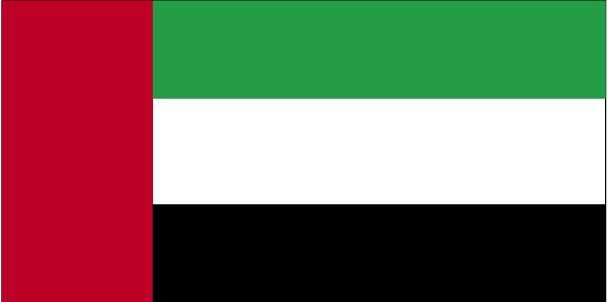Introduction
Background
The Trucial States of the Persian Gulf coast granted the UK control of their defense and foreign affairs in 19th-century treaties. In 1971, six of these states -- Abu Dhabi, 'Ajman, Al Fujayrah, Ash Shariqah, Dubayy, and Umm al Qaywayn -- merged to form the United Arab Emirates (UAE). Ra's al Khaymah joined in 1972.
Geography
Area
total: 83,600 sq km
land: 83,600 sq km
water: 0 sq km
Climate
desert; cooler in eastern mountains
Natural resources
petroleum, natural gas
People and Society
Population
total: 10,032,213
male: 6,824,131
female: 3,208,082 (2024 est.)
Ethnic groups
Emirati 11.6%, South Asian 59.4% (includes Indian 38.2%, Bangladeshi 9.5%, Pakistani 9.4%, other 2.3%), Egyptian 10.2%, Filipino 6.1%, other 12.8% (2015 est.)
Languages
Arabic (official), English, Hindi, Malayalam, Urdu, Pashto, Tagalog, Persian
Religions
Muslim 74.5% (official) (Sunni 63.3%, Shia 6.7%, other 4.4%), Christian 12.9%, Hindu 6.2%, Buddhist 3.2%, agnostic 1.3%, other 1.9% (2020 est.)
Population growth rate
0.6% (2024 est.)
Government
Government type
federation of monarchies
Capital
name: Abu Dhabi
Executive branch
chief of state: President MUHAMMAD BIN ZAYID Al Nuhayyan (since 14 May 2022)
head of government: Prime Minister (since 5 January 2006)
Legislative branch
description: unicameral Federal National Council (FNC) or Majlis al-Ittihad al-Watani (40 seats; 20 members indirectly elected using single non-transferable vote by an electoral college whose members are selected by each emirate ruler proportional to its FNC membership, and 20 members appointed by the rulers of the 7 constituent states; members serve 4-year terms)
Economy
Economic overview
historically oil-driven Middle Eastern economy; diversifying into a trade-oriented logistics and supply chain leader; strong foreign direct investment orientation; building trade and investment ties through partnership agreements; growing banking sector; recent economic linkages with Israel slowing due to Gaza conflict
Real GDP (purchasing power parity)
$707.307 billion (2022 est.)
$655.823 billion (2021 est.)
$628.455 billion (2020 est.)
Real GDP per capita
$74,900 (2022 est.)
$70,000 (2021 est.)
$67,700 (2020 est.)
Agricultural products
dates, cucumbers/gherkins, camel milk, goat milk, tomatoes, eggs, goat meat, milk, chicken, camel meat (2022)
Industries
petroleum and petrochemicals; fishing, aluminum, cement, fertilizer, commercial ship repair, construction materials, handicrafts, textiles
Exports
$335.238 billion (2020 est.)
$404.046 billion (2019 est.)
$392.863 billion (2018 est.)
Exports - partners
India 13%, Japan 10%, China 8%, Saudi Arabia 7%, Iraq 5% (2022)
Exports - commodities
crude petroleum, refined petroleum, gold, broadcasting equipment, natural gas (2022)
Imports
$246.886 billion (2020 est.)
$295.6 billion (2019 est.)
$281.536 billion (2018 est.)
Imports - partners
China 18%, India 10%, US 6%, UK 4%, Saudi Arabia 3% (2022)
Imports - commodities
gold, broadcasting equipment, refined petroleum, diamonds, cars (2022)
Exchange rates
Emirati dirhams (AED) per US dollar -
Exchange rates:
3.673 (2022 est.)
3.673 (2021 est.)
3.673 (2020 est.)
3.673 (2019 est.)
3.673 (2018 est.)
Page last updated: Thursday, June 20, 2024




